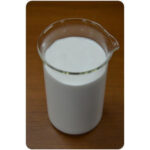
Textile Auxiliaries
Textile auxiliaries are describe as chemicals or designed chemical products that improve the efficiency of a processing operation in preparation, dyeing, printing, or finishing or are require to provide a specific effect.
Special finishing effects such as wash & wear, water repellence, flame retardancy, fragrance finish, anti smell, color deepening, and so on require Textile Auxiliaries.
Uses of Textile auxiliaries
Textile Auxiliaries are specifically design to wash and dye yarns and fabrics. These auxiliaries come in cationic, non-ionic, surfactant, and amphoteric forms for textile products.
The conversion of natural and man-made textile fibers is done according to end uses and attractive attributes as require by customers, and it involves a vast variety of organic and inorganic compounds known as textile chemicals.
The following compounds are use also in too textile auxiliaries or textiles:
1. Wetting Agent :
The wetting agent is a chemical that is use for fast moistening or watering textile fibres.
2. Detergent :
Detergents are chemicals that are use to clean textiles or remove fats, oil, and wax.

3. Emulsifier :
An emulsifier is a chemical that is use to combine oil and water.
4. Sizing Components:
Sizing components are the components that are use for sizing.
5. De-sizing Agents:
De-sizing refers to the chemicals used to remove the size components from cloth during wet processing. The enzyme, for example.
It is the most important aspect of the printing. Potato paste, rice, and carboxy-methyl cellulose are among examples.
what are auxiliaries in dying?
Dyeing auxiliaries are chemicals or designed substances that improve the efficiency of a dyeing processing operation.
Dye fixing agents, actionizing agents, dispersion & levelling agents, and other dyeing auxiliaries are among them. They aid in the stabilization of the dyeing bath, resulting in improved fatigue, level dyeing, and fastness qualities.
What are Auxiliaries Printing?
Textile chemical thickeners, binding agents, cross-linking agents, emulsifiers, fixing agents, dispersion agents, and defoamers are examples of printing auxiliaries.
Insoluble dyes are securely attaches to cloth by printing auxiliaries, which exploit the film forming action of adhesive to color the fabric.
Textile chemical thickeners, binding agents, crosslinking agents, emulsifiers, fixing agents, dispersion agents, silicone softeners, and defoamers are examples of printing auxiliaries.
Color yield is high while dye usage is minimal.
The printing auxiliaries are sticky and smooth, with good dispersion performance, allowing the dyeing material to be evenly disperse and accurately fixed in a specific position of the fabric without infiltration, resulting in a clear, bright color while saving dye and avoiding the drawbacks of traditional paste, such as uneven dyeing, color point, fine line breakage, and other drawbacks.
Colorfastness is excellent.
When the PH value is between 5 and 13, the printing auxiliaries do not experience condensation and hydrolysis in the color paste.
It has superior acid, alkali, and electrolyte resistance, as well as a high carrying capacity, allowing the dye to fix on fiber by several reactions.
It’s simple to use. These items are use in the same way as sodium alginate is. Pour water or warm water into the bucket first, then carefully whisk in the fresh paste until no granulation remains.
What are chemical Auxiliaries?
Chemical auxiliaries are compounds utilize in the process of a chemical synthesis but are not reagents since they are not integrated into the final product.
Title A chemical or a designed chemical product that facilitates a processing action is define as it.
Preparation, dyeing, printing, and finishing are some of the possible processing activities. Auxiliaries assist by speeding up or completing these tasks in a more effective manner.
Types of Textile Auxiliaries
Textile auxiliaries may be divided into a number of groups based on their purpose, such as sequestering agents, anti-creasing lubricants, pre-treatment chemicals, peroxide kille, and so on.
Agents for levelling, the carrier, desizing agent, anti-pilling agent, mercerizing, bleaching, antifoaming agent, and so on are only a few examples.
It’s also employed as a dye fixer and optical brightener, soaping agent or washing off agent, and softening agent, as well as for pH control and buffer system management.
We’ve also examined the various roles performed by these auxiliaries in this post for a better understanding of these categories.
Hemanjali Polymers is one of the leading textile auxiliaries producers and exporters, specializing in high-quality dyes, textile auxiliaries, and printing inks.
Hemanjali Polymers is a significant supplier of textile chemicals and auxiliaries. For the textile sector, we also export high-quality pre-treatment chemicals, finishing agents, and dyeing agents Screen printing.
A wide range of dyes and textile auxiliaries are used in the textile industry. Our auxiliary is of extremely good quality and is reasonably priced. Hemanjali Polymers, one of India’s Textile Auxiliaries Manufacturers, provides solutions for a variety of processes.





